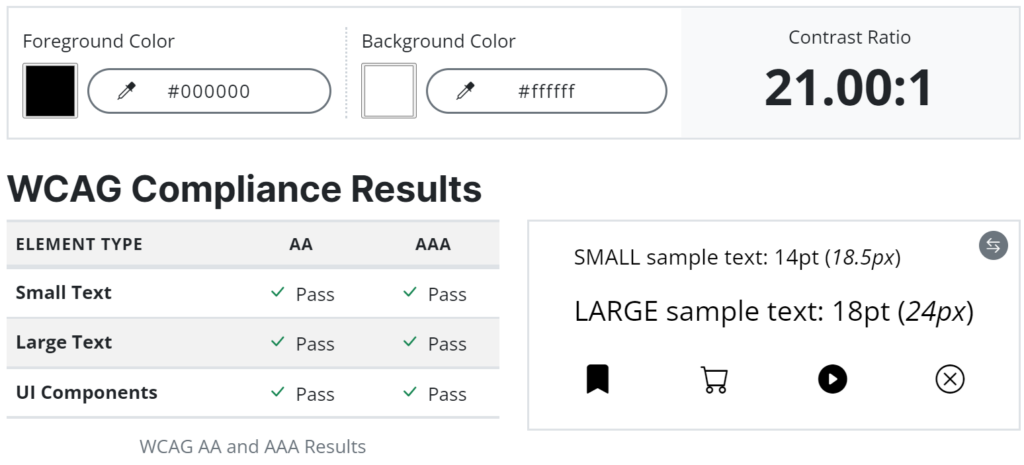Before this course, I’ve learned about digital accessibility in EDCI337 last year. So I’ve been familiar with some methods that can improve the accessibility in learning design ahead. Our interactive learning resource is planned to be online. Therefore, to meet the needs of all learners, we will process those few improvements:
Color contrast

We will use a colour contrast checker to make our content clear and visible for not only people with colour blindness but all people whether they have vision disability or not. For example, people who are using small screens, and people with bad vision prescriptions.
Transcript
We’ll make our synchronous session recorded in case learners miss some points or can’t show up. Moreover, transcripts will be made in all our podcasts or videos to help learners who lost their hearing and English language learners to catch up easily.
POUR Principles
At EDCI337, I got to know a theory called POUR Principles which is similar to the framework we learned this week, but especially for digital learning design.
Let me introduce it to you. The POUR principles help and remind learning designers to think and create their works in a more accessible way. These principles are listed below:
- Perceivable: make it possible for all learners to see and hear the information.
- Operable: help all learners navigate the information independently using their preferred tools.
- Understandable: support learners’ understanding through a consistent and predictable design.
- Robust: work for learners on a range of current and future technologies, including assistive technologies.
We can also apply these principles to our interactive learning resource. These principles are not only about overcoming barriers toward learners with a disability but for all learners. For example, learners who are not willing to use online services outside Canada, learners who are unable to use specific online services, learners who have no access to a computer and learners who learn slowly…
Reference
CAST. (n.d.). Designing for Accessibility with POUR. Retrieved from https://aem.cast.org/create/designing-accessibility-pour
